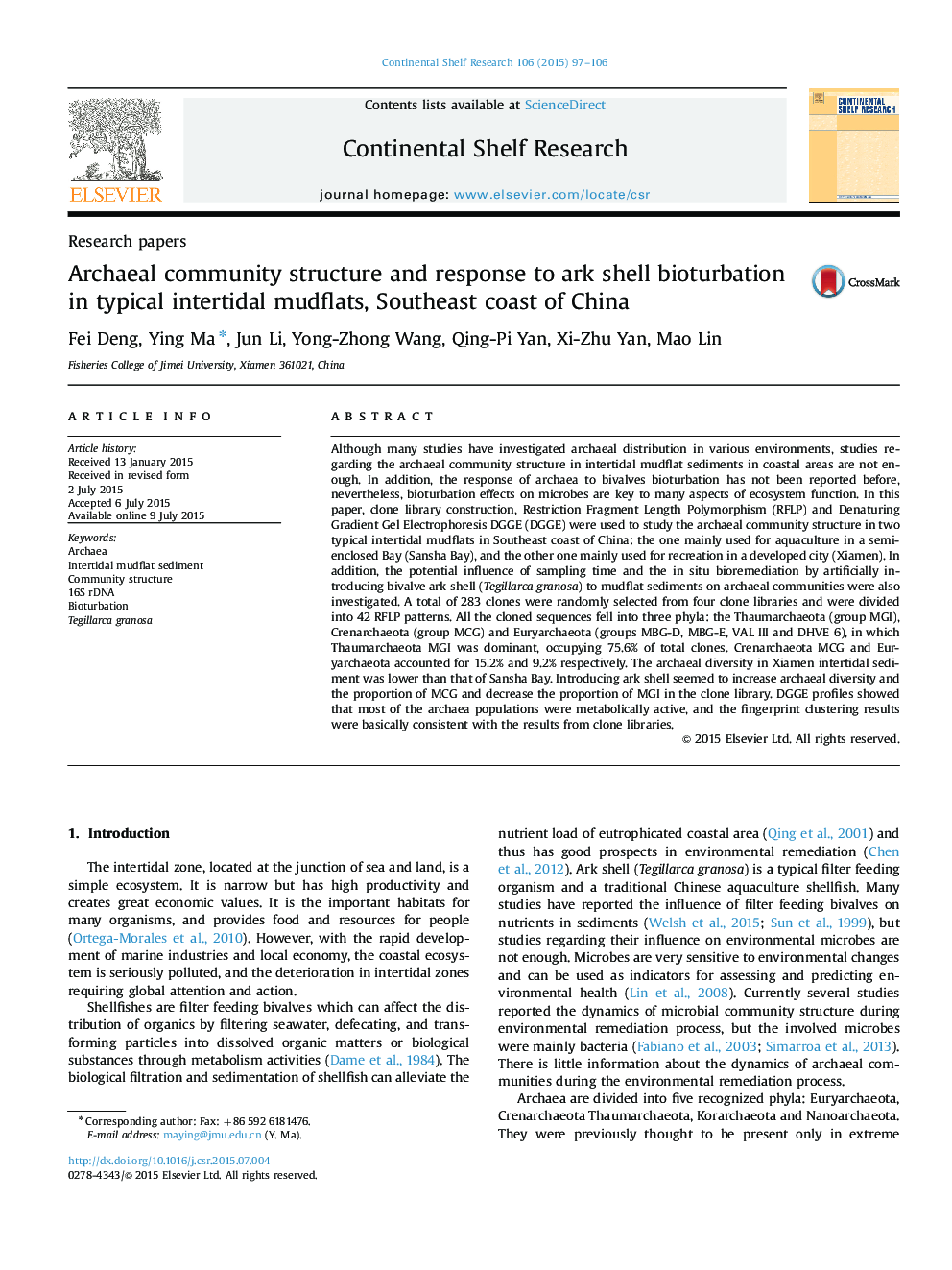| Article ID | Journal | Published Year | Pages | File Type |
|---|---|---|---|---|
| 4531669 | Continental Shelf Research | 2015 | 10 Pages |
•Archaeal communities were investigated in typical intertidal mudflats.•Three archaeal phyla were detected and Thaumarchaeota MGI was dominant.•Introducing ark shells increased archaeal diversity and MCG and decreased MGI.
Although many studies have investigated archaeal distribution in various environments, studies regarding the archaeal community structure in intertidal mudflat sediments in coastal areas are not enough. In addition, the response of archaea to bivalves bioturbation has not been reported before, nevertheless, bioturbation effects on microbes are key to many aspects of ecosystem function. In this paper, clone library construction, Restriction Fragment Length Polymorphism (RFLP) and Denaturing Gradient Gel Electrophoresis DGGE (DGGE) were used to study the archaeal community structure in two typical intertidal mudflats in Southeast coast of China: the one mainly used for aquaculture in a semi-enclosed Bay (Sansha Bay), and the other one mainly used for recreation in a developed city (Xiamen). In addition, the potential influence of sampling time and the in situ bioremediation by artificially introducing bivalve ark shell (Tegillarca granosa) to mudflat sediments on archaeal communities were also investigated. A total of 283 clones were randomly selected from four clone libraries and were divided into 42 RFLP patterns. All the cloned sequences fell into three phyla: the Thaumarchaeota (group MGI), Crenarchaeota (group MCG) and Euryarchaeota (groups MBG-D, MBG-E, VAL III and DHVE 6), in which Thaumarchaeota MGI was dominant, occupying 75.6% of total clones. Crenarchaeota MCG and Euryarchaeota accounted for 15.2% and 9.2% respectively. The archaeal diversity in Xiamen intertidal sediment was lower than that of Sansha Bay. Introducing ark shell seemed to increase archaeal diversity and the proportion of MCG and decrease the proportion of MGI in the clone library. DGGE profiles showed that most of the archaea populations were metabolically active, and the fingerprint clustering results were basically consistent with the results from clone libraries.
